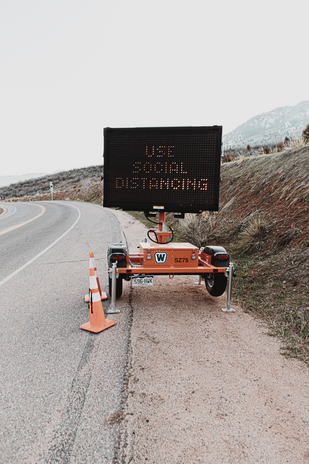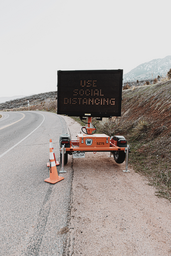The various norms in our society reflect community considerations and thereby change form or even disappear as we traverse from one part of the globe to another. Even as their birth cannot be fathomed through a simple cause and effect equation, we can’t rule out the idea that many of these norms were conceived by necessity. Our generation stands witness to a norm that pervades global cultures, a norm that rose out of a genuine concern to limit a damaging disease and a norm that doesn’t define its future. Social distancing that corresponds to maintaining a prescribed amount of physical distance and practicing isolation, today, is symbolic of the new normal that the Covid-19 pandemic has turned us into.
The damage that contagious diseases and pandemics induce and the relief that social distancing provides are points of universal acceptance and this article facilitates a discussion not on the onset of social distancing but the repercussions that it has on the lives of people and the future that these perhaps behold.
While the use of the term social distancing has been a result of recent conceptualization, historically, several epidemics and pandemics were dealt with by applying distancing measures. Isolation, quarantine and other relevant distancing measures formed people’s intuitive reactions to prevent themselves from catching infectious diseases and could be observed through history during the Black Death, 1918 Influenza Pandemic, Spanish flu and other similar epidemics and pandemics.
What makes our current distancing distinct is the increased modernization it is set against. Advancements in the fields of science and technology have ensured that today’s society has been able to actualize the true essence of the oxymoronic ‘distanced togetherness’. The distance of several thousand yards can now be covered by a click on the desktop. Hence, while the pandemic was a flood of sorrow, the practice of social distancing came off as one of the only desirable norms across history. However, this narrative pertains to the privileged who have been able to mobilize enough resources to live through the consequences of social distancing.
In their circles, online interactions have cemented themselves and have in fact come across as reliefs to the fast-paced offline lives. For several persons, it’s a boon that should never have to be withdrawn. Does that mean that social distancing has not been able to pierce through the lives of the rich with significant influence? Absolutely not. Despite how hard we try to ignore this, social distancing has enabled us to appreciate the value of human touch and in-person interaction. Working from home or living in solidarity seems viable just as long as the nights don’t hit with a pang of fear and loneliness, two justifiably pervasive feelings in the middle of a worldwide pandemic.
As social beings, humans crave interaction and while the lack of that has fostered alienation, it has also in some cases invoked greater solidarity with oneself. The structure of our physical space leaves a print on the understanding of the mental space. Individuals have found time to be in the company of their thoughts and have in the process rediscovered themselves. Even at a community level, the latent individuality of people has found recognition in its distinction from group identity. Collective identities have blurred in the background as access to virtual spaces becomes the binding factor in ensuring the same.
As for the masses in a densely populated country like India, social distancing which started as a circumstantial necessity has appeared to be a distant achievement. Even as we’ve endeavored to make space for it in our lives, our cramped realities have forced it out. It’s not only in our access to the public space that social distancing stands as an inaccessible luxury but for some, private spheres also don’t provide the desired amount of space. What then has been the repercussion of the crooked application of social distancing in the lives of the poor? Not only has improper physical distancing failed to fix or save the lives of the underprivileged, its application elsewhere among the wealthy in society has ensured that they’ve also lost their livelihoods.
Historically speaking, community responsibility has over the years successfully limited the blemishing scopes of pandemics and epidemics thus allowing individuals to dive back into in-person social interactions. Hence, social distancing has ceased to be a perennial norm. Even in our current encounter with Covid-19, social distancing has been applied in congruence with the degree of its spread. While an immediate end to the practice does not seem apparent, a compromise with its severity is gradually coming through.
As long as the social distancing measures stays, the future of social interaction looks both hazy and dim. It essentially means living in a world where sneezes are not always accompanied by ‘God bless yous’, greeting one another would mean smiling through masks and standing together would mean standing at least two feet away. None of these are realities of the social utopia we wish to live through.


